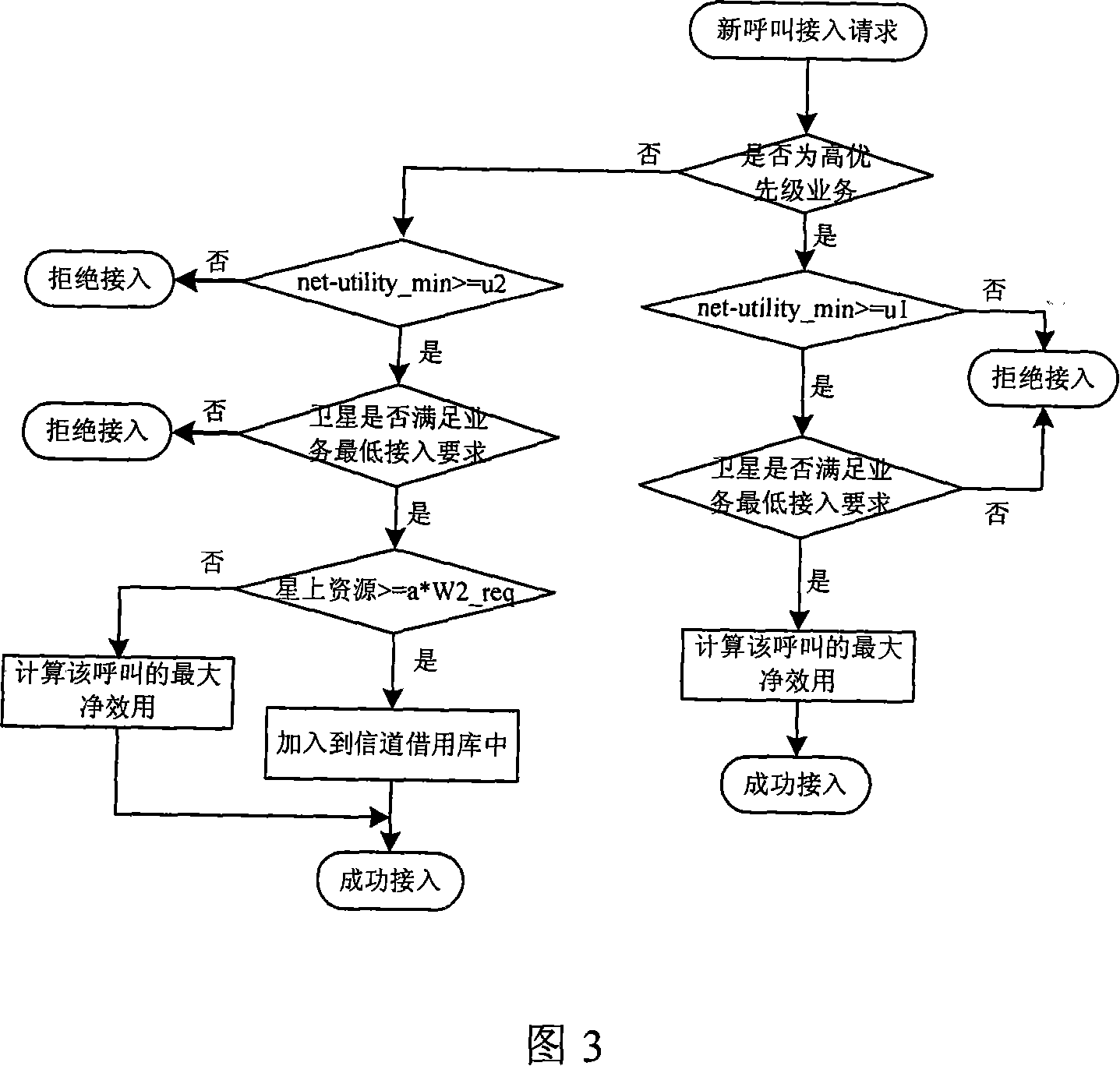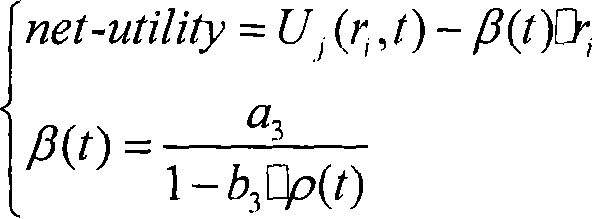A satellite call access control method
A technology of call access control and new call, applied in radio transmission system, communication between multiple stations, electrical components, etc., can solve the problem of not quantitatively considering users' different QoS requirements and satisfaction, on-board wireless resource utilization It can solve the problems of low rate and low overall service utility, and achieve the effect of improving bandwidth jitter and fairness issues, improving satellite network congestion, and improving on-board resource utilization.
- Summary
- Abstract
- Description
- Claims
- Application Information
AI Technical Summary
Problems solved by technology
Method used
Image
Examples
Embodiment Construction
[0040] The future satellite network needs to support multiple services, and needs to provide different QOS guarantees for different services. Therefore, the method of distinguishing services is generally adopted in the satellite network, and different services are divided into several priority levels, and different priority levels have different QOS guarantees. In access control, services with different priorities also need to be treated differently. Satellites give priority to meeting high-priority resource requirements and access high-priority services. For the sake of simplicity, in the description below, services are mainly divided into high-priority services and low-priority services. For simplicity, it is assumed that the QOS requirements of high-priority services include the minimum number of resources and the expected number of resources; the QOS requirements of low-priority services include the minimum number of resources and the expected number of resources, and the ...
PUM
 Login to View More
Login to View More Abstract
Description
Claims
Application Information
 Login to View More
Login to View More - R&D
- Intellectual Property
- Life Sciences
- Materials
- Tech Scout
- Unparalleled Data Quality
- Higher Quality Content
- 60% Fewer Hallucinations
Browse by: Latest US Patents, China's latest patents, Technical Efficacy Thesaurus, Application Domain, Technology Topic, Popular Technical Reports.
© 2025 PatSnap. All rights reserved.Legal|Privacy policy|Modern Slavery Act Transparency Statement|Sitemap|About US| Contact US: help@patsnap.com



